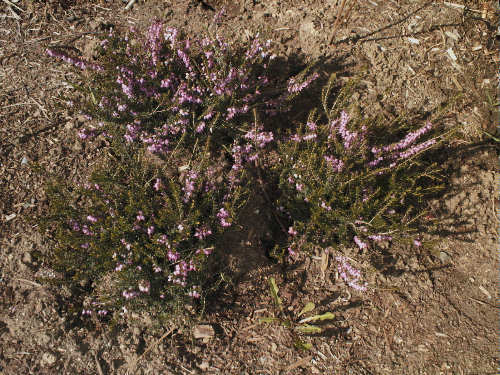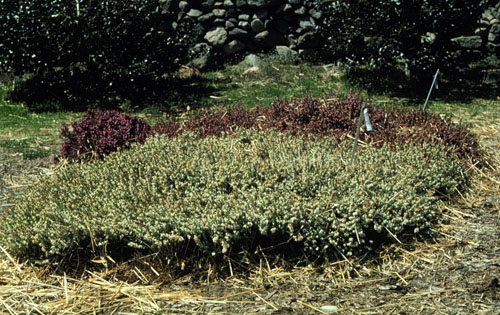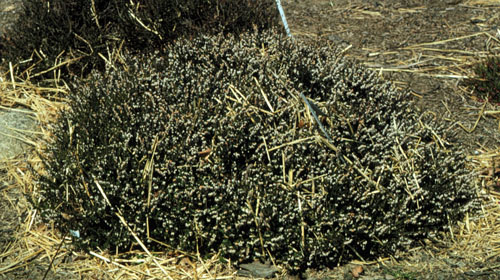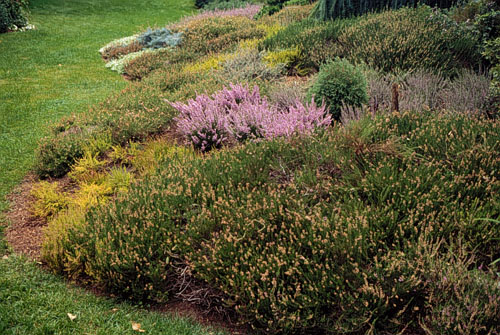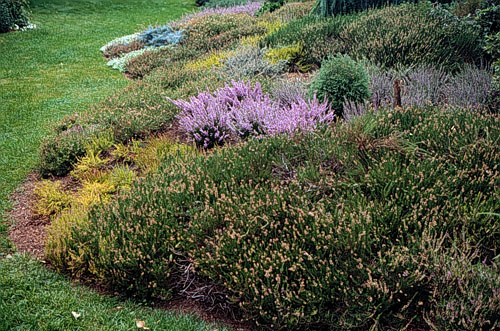Erica carnea
Spring Heath, Winter Heath
Ericaceae
ExpandHabitat
- native to central and southern Europe
- zone 5
Habit and Form
- a low growing evergreen shrub
- up to 12" tall; twice as wide as tall
- broad spreading or trailing
- becomes irregular in shape with age
- dense and compact
- slow growing
Summer Foliage
- small, needle-like leaves about .2" to .3" long
- color is bright green
- leaf arrangement is whorled to opposite
- leaves have very short petioles
- leaf margins turned under
Autumn Foliage
- evergreen with no fall color
Flowers
- blooms in late winter to early spring (late March to early April)
- individual flowers are small and cylindrical
- flowers borne in one-sided racemes
- color is red to pink for the straight species
- typically showy in bloom
Fruit
- small, ornamentally unimportant capsules
Bark
- not or ornamental importance
Culture
- requires moist, acidic perfectly-drained soils
- soils should be low in fertility and high in organic matter
- full sun to partial shade
Landscape Use
- for rock gardens
- in groupings
- as a groundcover
- for early spring bloom
- filler plant with other ericaceous plants
Liabilities
- need specific site requirements
- cold injury is likely in severe winters
- often killed by overfertilizing in landscapes
ID Features
- needle-like evergreen leaves in whorls
- leaf margins rolled under
- early spring bloom
Propagation
- by seed
- by cuttings
Cultivars/Varieties
There exist many more than 100 cultivars of this plant, few of which are in general commerce. The brief listings below present a brief overview of the diversity available.
'King George' - 12" tall; flowers crimson.
'Springwood Pink' - light pink flower; 8" tall; common in the trade.
'Springwood White' - 8" tall; flowers white; common in the trade.
'Vivelii' - 8" tall; flowers red.
'Winter Beauty' - 5" tall; pink flowers.

